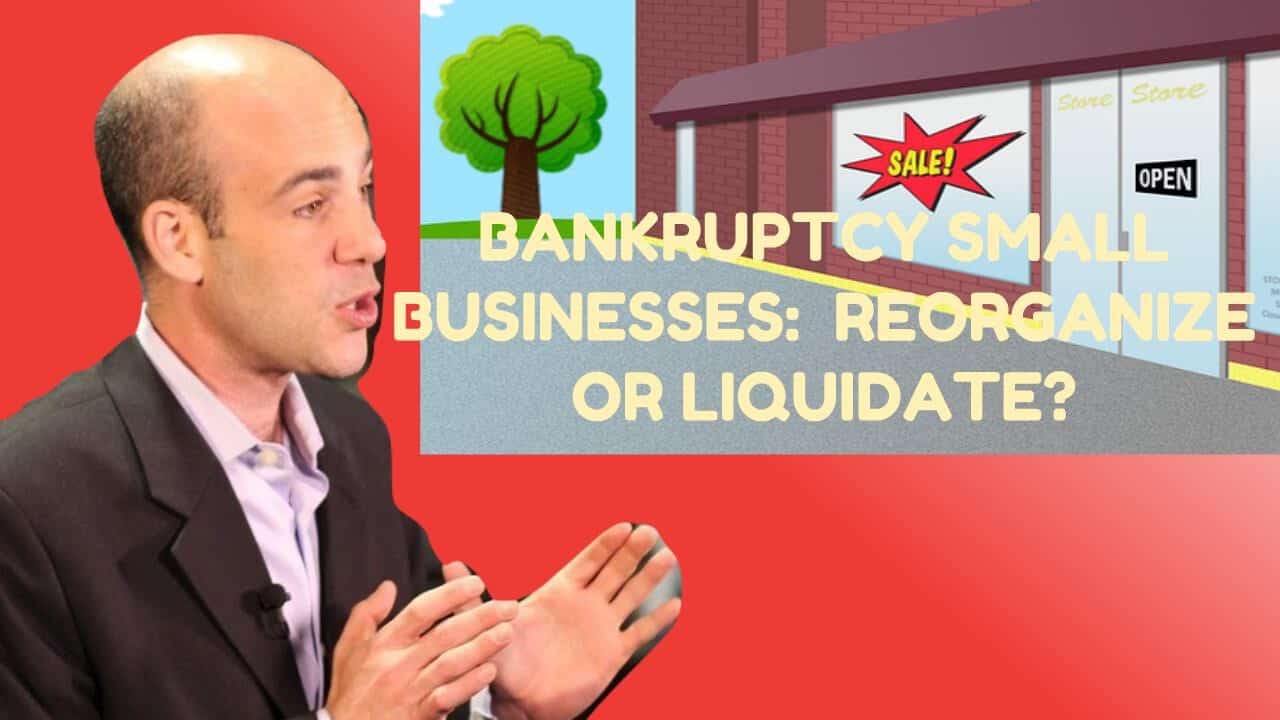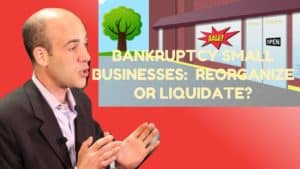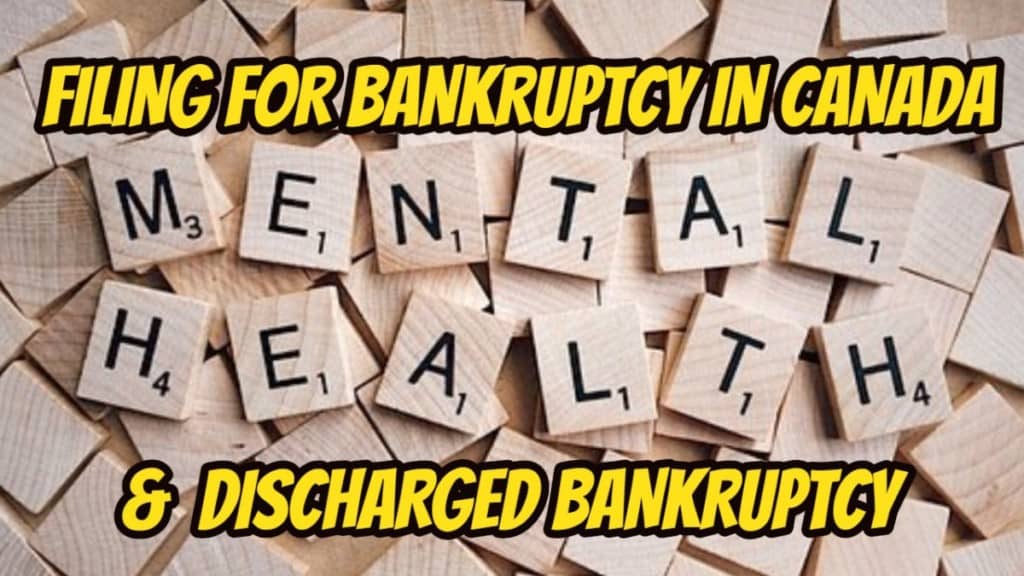If you would prefer the audio version of this Brandon’s Blog or reading subtitles, please scroll to the bottom of this page and watch the picture at the bottom.
Introduction
On February 5, 2020, the Toronto Star wrote about the bankruptcy of Barrymore Furniture Co. Ltd. (Barrymore) titled “Barrymore Furniture has filed for bankruptcy — leaving a throng of angry, unpaid workers in its wake”. It talks about the sad story of this family-owned business going into bankruptcy. It also states that the workers will not receive termination pay, severance pay or benefits. For the record, my Firm is not involved in this bankruptcy file.
The purpose of this Brandon’s Blog is to describe the sad story of the Barrymore bankruptcy and what happens to severance pay Ontario (as well as other employee remuneration) when a company goes bankrupt. But first, a little primer.
Who is entitled to severance pay Ontario?
“Severance pay” is a settlement that is paid to a qualified employee who has their employment “severed.” When a long-term employee loses their job, it makes up an employee for losses (such as loss of standing) that happen.
Severance pay is not the same as termination pay. Termination pay is given instead of the called for notification of termination of work. Not everyone is entitled to severance pay.
A worker gets approved for severance pay if his/her employment is terminated and she or he:
- has worked for the company for 5 or more years (whether continuous or not or active or otherwise) and
- his/her employer:
- has a payroll in Ontario of a minimum of $2.5 million; or
- severed the employment of 50 or more workers in a six-month period because all or part of the company completely closed.
To determine the amount of severance pay Ontario a worker is entitled to receive, you multiply the employee’s normal wages for a normal week by the sum of:
- the # of actual full years of employment; as well as
- the # of completed months of employment divided by 12 for a year that is not finished.
The maximum amount of severance pay Ontario to be paid under the Employment Standards Act is 26 weeks.
The Barrymore bankruptcy
Barrymore was a Canadian producer, wholesaler and had a retail store of high-end furniture. It started in business in Toronto going back to 1919. On November 29, 2019, Barrymore tried a business restructuring by filing a Notice of Intention To Make A Proposal (NOI). On December 9, 2019, Barrymore sought and received, a Court Order enabling for an extension of time to submit a restructuring Proposal. Barrymore had until February 12, 2020, to submit its debt settlement plan and other necessary documents.
Barrymore failed to submit on time its cash flow statement, as called for by the Bankruptcy and Insolvency Act (Canada) (BIA). On January 17, 2020, Barrymore filed an Assignment in Bankruptcy.
Barrymore filed its NOI to try to accomplish a few things:
- Give it some breathing room from its creditors by invoking a stay of proceedings.
- Allow it to operate during the crucial holiday shopping season.
- Try to find a buyer for its business.
The post-NOI period
Once the NOI was filed, Barrymore began a sales process to try to find a buyer for the entire Barrymore business. Seventeen parties were identified as being potential purchasers. Only seven were interested in performing due diligence.
At the same time, the Proposal Trustee got proposals from two professional liquidators. They did that so in case no buyer closed a purchase of Barrymore, they could hit the ground running in liquidating the assets.
Unfortunately, nobody submitted an offer for Barrymore’s business. Hence, Barrymore’s bankruptcy.
Barrymore’s statement of affairs
The Barrymore sworn statement of affairs shows assets of $240,000. The assets are inventory ($200,000) and machinery and equipment ($40,000). Barrymore has 5 secured creditors for $4.3 million. The single largest secured creditor is its chartered bank with a claim of $3.7 million. Assuming the Bank’s security is good and in the first position, the estimated asset value of $240,000 won’t go very far!
The sworn statement of affairs also shows 118 unsecured creditors with claims of $3.2 million. So with total claims recorded in Barrymore’s books and records of $7.5 million and the books showing only $240,000 of assets, there is a huge imbalance. The family that owns the business is shown to be owed $1.7 million as an unsecured creditor. The former employees are also unsecured creditors.
With that financial imbalance, it is no wonder the licensed insolvency trustee (formerly called a bankruptcy trustee) in the Barrymore bankruptcy could not run the business. Instead, it received Court approval to enter into a liquidation agreement with one of the liquidators. The liquidation sale to the public has begun. Either the amount shown in the books for inventory value is too low, or, the liquidator has the authority to bring in new goods to put into the bankruptcy sale, or both. It is too much effort to go through for inventory worth so little compared to the Bank’s secured debt!
The employer went bankrupt did not pay employees
I don’t know what the real individual claims of each former employee might be, but it can include:
- Wages or salary
- Vacation pay
- Termination pay
- Severance pay
- Benefits
The Barrymore employees are members of the United Steelworkers Union. The Steelworkers Toronto Area Council represents the former Barrymore employees. Both the Union and the former employees are naturally quite upset over the bankruptcy.
“Once again, working people are victims of a rigged system that disregards their interests while giving priority to wealthy investors,” said Carolyn Egan, President of the Steelworkers Toronto Area Council. Her comment is understandable. However, based on the sworn statement of affairs, it does not look like any “wealthy investors” are getting paid.
Protecting employees from the bankrupt employer
The United Steelworkers and the Canadian labour movement as a whole have been lobbying for reforms to Canada’s bankruptcy and insolvency legislation for numerous years to give greater top priority to workers and pensioners.
I have written many blogs on the topic of how various federal politicians have put forward Bills to give workers and retirees more rights. Several bills proposing such reforms were provided previously in Parliament, but none made it into legislation by the Liberal federal government.
Rather, only some warm words and minor amendments relating to Director responsibilities were included in the last federal budget and passed. To put it bluntly, the Liberal federal government has rejected enacting legislation to protect workers and retirees when an employer enters insolvency proceedings.
The Liberal majority government showed no interest in any meaningful reform in the area of employee rights in bankruptcy or insolvency. Perhaps for their next budget, the minority government will be forced to look seriously at it.
What happens if my employer owes me money & goes bankrupt?
The BIA created a device for workers of a company that entered either bankruptcy or receivership and are owed money. It does not cover employees of a company trying to right-size itself through a restructuring proposal. The Wage Earner Protection Program Act (WEPPA) provides for wages or benefits, including termination and severance pay, accumulated in the 6 months prior to the business becoming bankrupt or placed right into receivership.
The WEPPA ended up being law due to the federal government’s previous concern that when employees experienced “the company went bankrupt and didn’t pay me wages” there was seldom an opportunity for employees to obtain any of their income owed. As discussed, shortly, there are limits to or caps on what employees may receive.
WEPPA calculation: Who cannot submit?
However, you do not qualify for WEPPA if, throughout the time for which amounts owed to you are past due, if you:
- were a Director or Officer of the business;
- had a management placement in the company; or
- were management whose tasks included making financial decisions on the negotiation or non-payment of amounts owing.
WEPPA calculation Canada
You could qualify if:
- your previous employer has really gone into bankruptcy or receivership; as well as
- you have overdue wages, salary, vacation pay or unreimbursed costs from the firm throughout the 6 months prior to the date of bankruptcy or receivership.
The WEPPA gives funds to Canadian employees owed money when their employer enters into either bankruptcy or receivership. The WEPPA provides a punctual settlement of qualifying employee earnings. The quantity of the qualifying employee earnings is an amount equivalent to 7 times maximum regular insurable profits under the Employment Insurance Act. As of January 1, 2020, the maximum yearly insurable earnings amount is $54,200. This means that the max amount a former employee can claim under WEPPA is $7,296.17 in 2020.
Receivers and bankruptcy trustees are required to tell employees of the WEPPA program and provide workers information regarding amounts owing. From the day of bankruptcy or receivership, trustees, as well as receivers, have 45 days to send out Trustee Information Forms revealing the amounts owing to each of the workers.
So payment under WEPPA is something, but may not fully compensate each former employee. Of the amount paid by Service Canada, who administers the employment insurance system, the amount of $2,000 per employee paid out is a super-priority against the current assets of the company. The balance of amounts paid to each employee, up to the maximum, are unsecured claims.
So, in Barrymore’s case, the total of all the individual first $2,000 amounts paid to each former employee will rank in first place against the inventory at the date of bankruptcy. This claim ranks ahead of all listed creditors, even the secured creditors.
Wrapup
Have you lost your job due to the fact that your employer entered into bankruptcy or receivership? Were you a Director of a company that went bankrupt or into receivership and now you are being chased for statutory personal liabilities? Is your company in financial trouble and you just don’t know how to save it? Is the pain, stress and anxiety of excessive debt currently negatively affecting your health?
We understand your pain. We will certainly ensure that no bill collectors call you. We will take all the migraines, stress and anxiety you are experiencing off of your shoulders and place it onto ours. We will repair things so that you can march forward in a healthy and balanced way, pain-free, debt-free and guilt-free.
It is not your fault that you remain in this scenario. You cannot fix it on your own since you have actually only been shown the old methods. The old ways do not work anymore. The Ira Smith Team makes use of brand-new ways which will return you promptly to a hassle-free life while getting rid of your debt.
Get in touch with the Ira Smith Team today. We have decades as well as generations of experience helping people and businesses seeking financial restructuring and debt relief. As a licensed insolvency trustee, we are the only specialists certified and overseen by the Federal government to provide debt settlement and financial restructuring services.
We provide a totally no cost appointment to help you solve your issues. We understand your discomfort that your debt creates. We can also end that painful feeling right away from your life. This will certainly allow you to start afresh again. Call the Ira Smith Team today to ensure that we can begin assisting you as well as get you back into a healthy and balanced, stress-free life Starting Over Starting Now.










 ToToronto
ToToronto 

